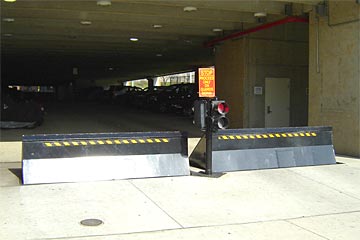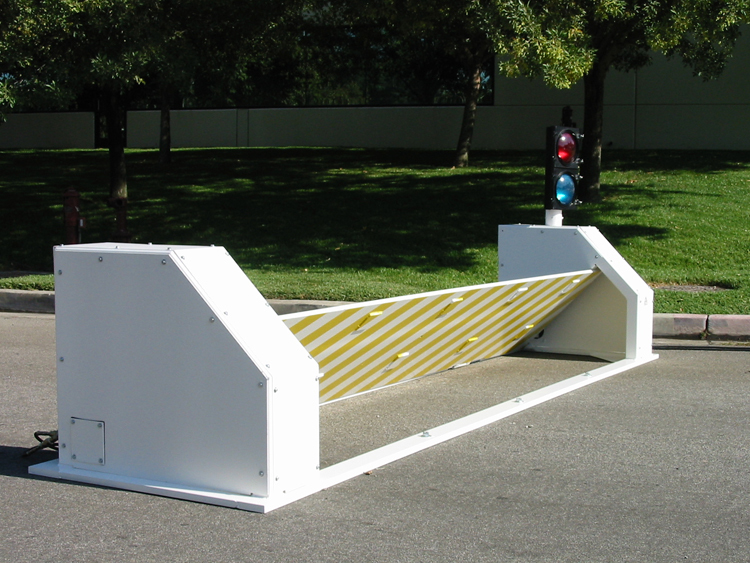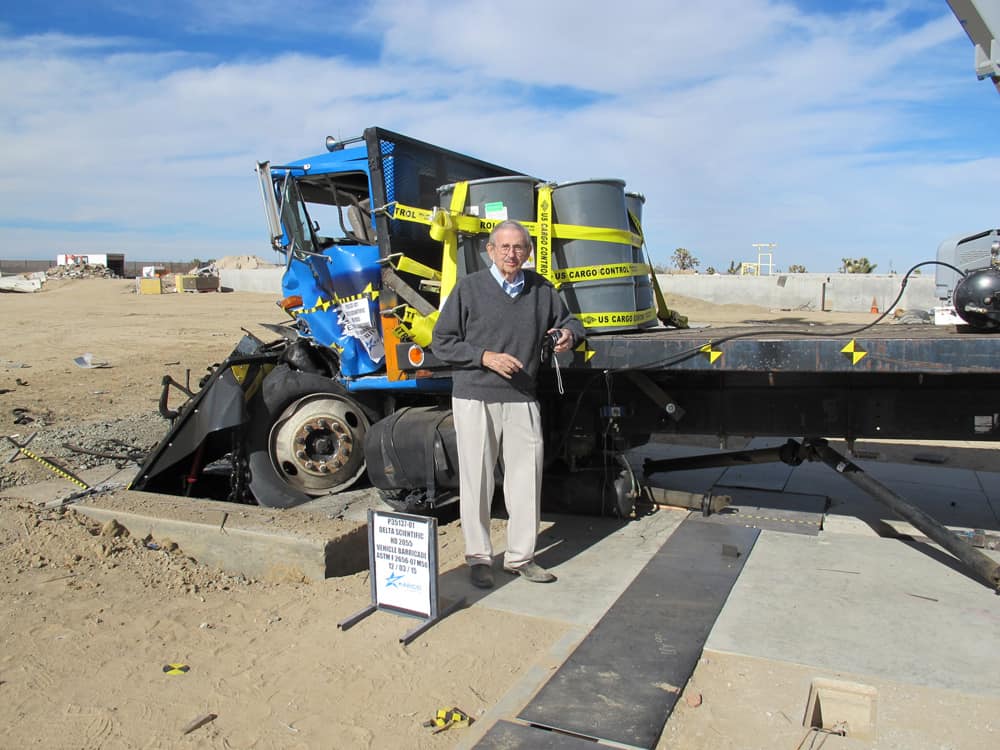About Wedge Barriers
Wedge Barriers Fundamentals Explained
Table of ContentsGetting The Wedge Barriers To WorkWedge Barriers for Beginners


18 may be done quicker, conveniently, and price successfully. FIG. In specific embodiments, the support 30 may be a steel structure consisting of plates, beam of lights(e. g., I-beams ), and/or various other frameworks that are safeguarded within the structure 14, which might be concrete. At the surface 12, a top side 28 of the support 30 may be at the very least partially revealed
, therefore making it possible for the accessory of the barrier 10 to the support 30. g., threaded openings)in one or even more beams or plates of the anchor 30 might be revealed to the surface 12. In this manner, screws 32 or various other mechanical fasteners may be made use of to safeguard the obstacle 10 to the support 30. As the obstacle 10 is placed to the surface area 12 of the structure 14, collection of debris and other material beneath the barrier may be reduced, and parts of the bather 10 may not be subjected to below quality settings. As suggested by referral character 52, the training system 50 includes components disposed under the wedge plate 16. The parts 52 beneath the wedge plate 16 may consist of an electromechanical actuator, a webcam, one or even more link webcam surfaces, and so forth. Additionally, the training mechanism 50 includes a springtime assembly 54
The springtime rod 58 is coupled to a camera(e. g., webcam 80 received FIG. 4) of the lifting device 50. The springs 60 disposed concerning the springtime pole 58 are kept in compression by spring sustains 62, consisting of a repaired spring support 64. That is, the set springtime assistance 64 is repaired family member to the foundation 14 and the rest of the bather 10.
The Basic Principles Of Wedge Barriers
The remaining force applied to
the cam web cam deploy the wedge plate 16 may be provided offered an electromechanical actuator 84 or other actuator. The spring setting up 54 and the actuator 84(e. Wedge Barriers. g., electromechanical actuator)might operate together to translate the camera and raise the wedge plate 16.
As stated above, the spring setting up 54 applies a continuous force on the camera, while the electromechanical actuator might be controlled to exert a variable pressure on the camera, consequently making it possible for the lifting and lowering( i. e., deploying and withdrawing )of the wedge plate 16. In specific embodiments, the consistent force applied by the spring assembly 54 may be adjustable. g., electromechanical actuator) is impaired. As will be appreciated, the springtime assembly 54 may be covered and protected from particles or various other aspects by a cover plate(e. g., cover plate 68 revealed Your Domain Name in FIG. 4) that may be considerably flush with the elevated surface 38 of the foundation 14. As mentioned above, in the released placement, the wedge plate 16 serves to obstruct accessibility or traveling past the barrier 10. As an example, the obstacle 10(e. g., the wedge plate 16 )might block pedestrians or vehicles from accessing a residential property or path. As discussed over, the barrier 10 is affixed to the anchor 30 protected within the structure 14,

front braces 71. Therefore, the affiliation settings up 72 might pivot and turn to enable the collapse and expansion of the affiliation assemblies 72 throughout retraction and release of the bather 10. The linkage settings up 72 reason movement of the wedge plate 16 to be limited. If a car is traveling towards the deployed wedge plate 16(e. For instance, in one situation, the safety legs 86 may be extended throughoutmaintenance of the barrier 10. When the security legs 86 are released, the safety and security legs 86 support the weight of the wedge plate 16 against the surface 12. Therefore, the training system 50 may be shut down, serviced, eliminated, replaced, and so forth. FIG. 5 is partial perspective view of a personification of the surface-mounted wedge-style obstacle 10, showing the webcam 80 and the camera surfaces 82 of the training mechanism 50. Particularly, two cam surfaces 82, which are referred to as lower cam surfaces 83, are placed listed below the web cam 80. The reduced webcam surface areas 83 may be fixed to the surface area 12 (e. As an example, the reduced web cam surface areas 83 and the installing plate 85 may form a single item that is secured to the support 30 by bolts or various other mechanical fasteners. Additionally, 2 cam surface areas 82, which are referred to as upper webcam surface areas 87, are placed over the cam 80 and combined his explanation to (e. In various other personifications, stepping in layers or plates may be placed between the surface 12 and the reduced camera surface areas 83 and/or the wedge plate 16 and the upper cam surfaces 87 As discussed over, the web cam
80 translates along the webcam surface areas 82 when the wedge plate 16 is raised from the pulled back placement to the deployed setting. Furthermore, as discussed over, the springtime setting up 54 (see FIG. 3 )may give a pressure acting upon the camera 80 in the direction 102 using springtime rod 58, which might minimize the pressure the electromechanical actuator 84 is required to put on the web cam 80 in order to activate and raise the wedge plate 16. 1 )to the released placement(see FIG. 4). As shown, the webcam 80 consists of track wheels 104(e. g., rollers), which contact and translate along the web cam surfaces 82 throughout operation.